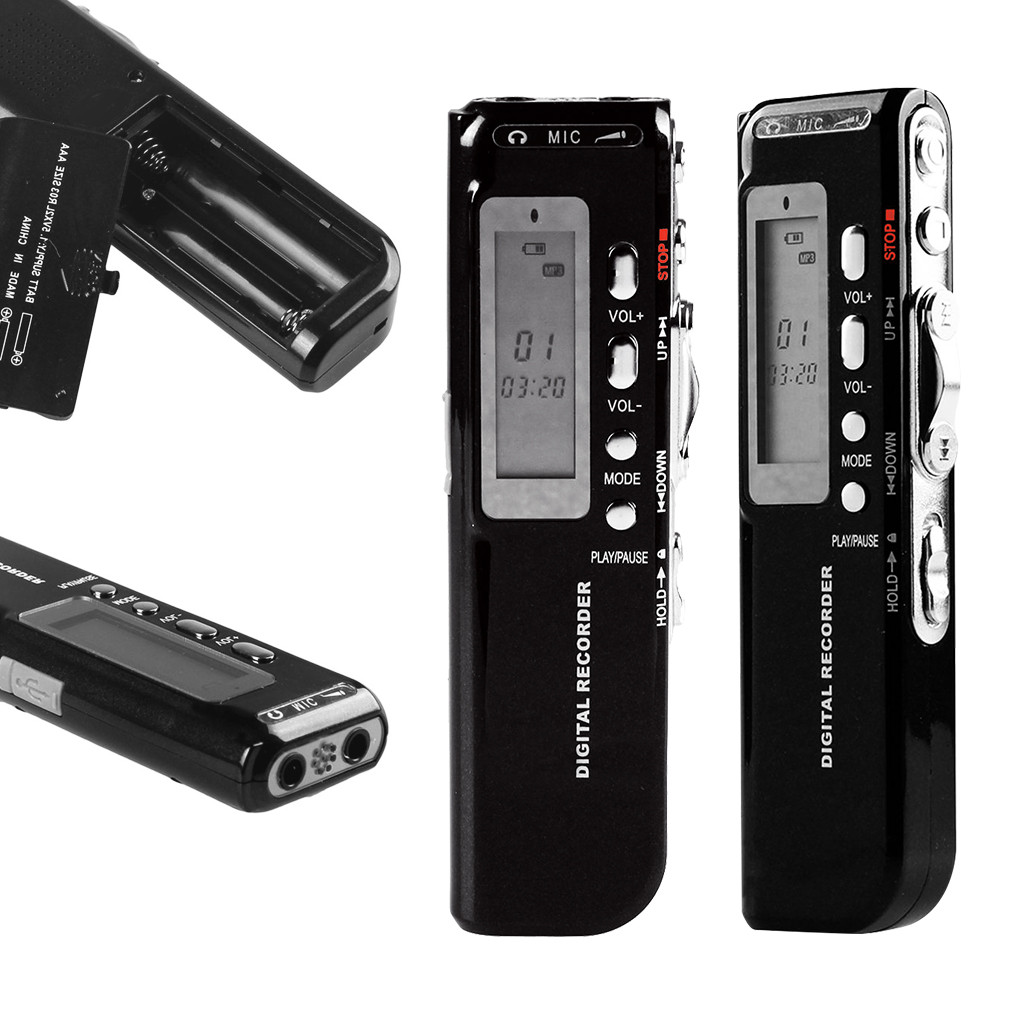The best transmitters and radio synchronizers in 2022
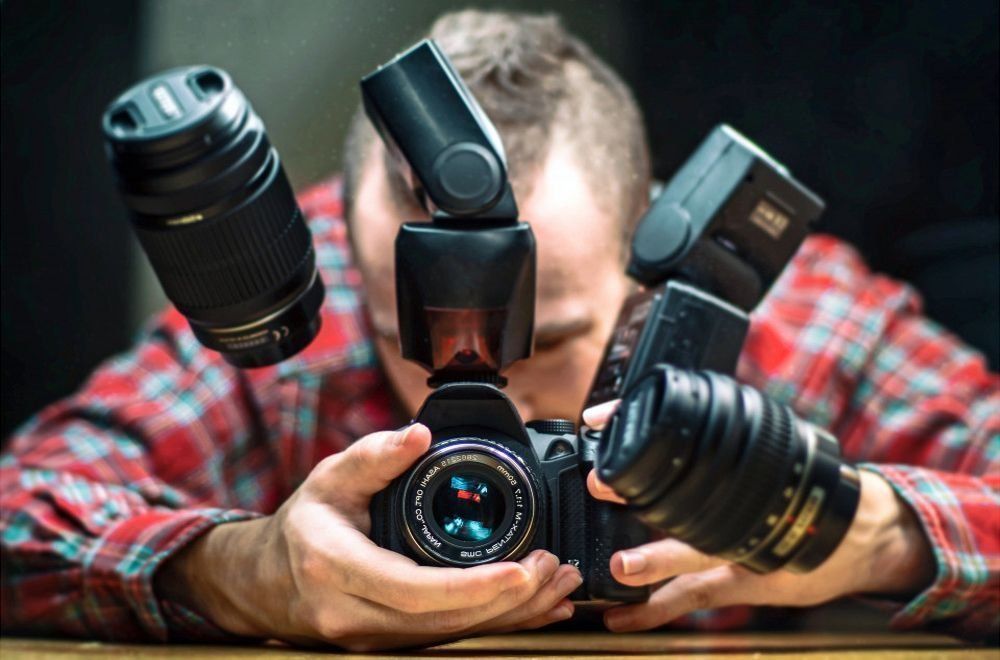
Those who are professionally engaged in photography are well aware that often one on-camera flash is not enough to create a good photo. To create the right lighting in studios or at various events, external flashes are constantly used. And here the question arises before the photographer: How to make an external flash fire correctly and at the right time? After all, all of them, with extremely rare exceptions, are equipped with light traps and are triggered almost by a lighter. Sometimes this can be useful, but most of the time it still gets in the way.
And here synchronizers come to the rescue. They can be made in the form of sync cords connected to an external flash with a wire, but they are becoming a thing of the past due to their inconvenience.
Now they are being replaced by radio synchronizers, which transmit a signal to operate through a special transmitter. They consist of a transmitter that is installed in a special connector on the camera, called a “hot shoe”, and transmits a signal to fire to a receiver that is placed on the flash and receives this same signal.
They are much more convenient than sync cords, if only because people don’t have to trip over cords lying all over the floor, and you don’t have to worry about whether there is enough cable to connect that distant flash.
In our article, we will explain what TTL, groups, channels are and why they are needed at all. We will tell you how to choose the right radio synchronizer for your purposes, consider popular models and help you make the right choice.
Content
Options
It can be difficult for a beginner to understand the specific parameters characteristic of radio synchronizers, but everything here is not as complicated as it might seem at first glance.
- TTL is a very useful feature that allows an external flash to fire in exactly the same way as a camera flash. She, as if by a sync cord, transmits to her the power parameters and other information automatically configured by the camera.
This comes in handy if you don't have time to manually set the special settings for each flash.
- Channels - a parameter indicating which channel the radio signal will be sent to trigger.
This is necessary so that your flash only fires on a radio signal and does not “light up” from the next one.
- Groups - a parameter showing how many flashes can be individually configured.
It allows you to control each of your flashes by setting the desired parameters for it. You can also combine several flashes with common settings.
Synchronizers
And now let's go directly to the models on the market.
Cactus V4 (~40$)
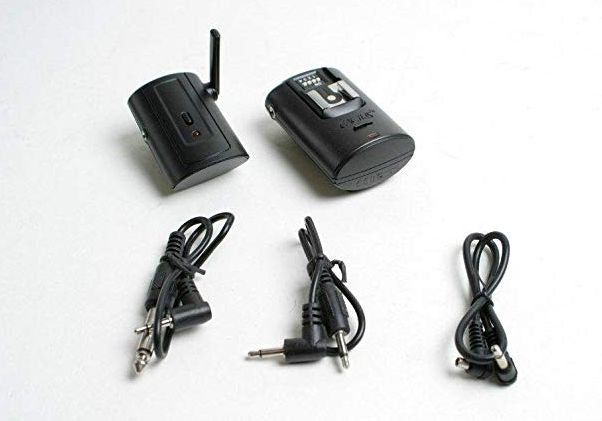
Let's start our review with an inexpensive and very popular model - Cactus V4.
I would immediately like to note the good quality of the plastic, everything is assembled with dignity, the parts are tightly fitted to each other, nothing staggers or creaks. For such a price, this is quite good.
The receiver is made in the form of a stand. It even has special feet on the battery cover. Just above this compartment is a shoe for installation in a standard flash shoe with a 1/4 inch hole, inside of which a thread is cut. There are no problems with installing a flash into this connector.
The transmitter conveniently plugs into the hot shoe on the camera and holds tightly in it.
The channel switches are located on the back of the transmitter. There are only four of them, and changing the channel in which case it will not be difficult.
Special thanks should be said to the manufacturer for the fact that for switching in the receiver and transmitter, a Jack 3.5 mono connector is used, which connects to all cameras, the wires for it are included, and, in general, these wires cost a penny.
The range of this model is 30 meters, and according to the results of numerous tests, it has no problems with operation in this radius. And there is no difference where you put the equipment, on the street or in the apartment.
It should only be taken into account that its operating temperature is from -10 to 45 degrees, so it is better not to use it in severe frost.
The advertised sync speed is 1/500, but for most users it fires at 1/350, which is also good, especially considering that most SLR cameras have a minimum shutter speed for shutter sync of 1/250.
Even during the tests, an interesting feature was revealed: some flashes, in particular, the Sigma 500 SU, can fire twice in one trigger. The problem disappears if you unscrew the flash power to the maximum, but with high-speed shooting at a slow shutter speed, you can get a double exposure, which is not good.
The synchronizer operates at a frequency of 433 MHz, which may cause interference on some channels when working close to other photographers using similar synchronizers.
- Reliable operation at the declared distance;
- Durability and workmanship;
- Convenient connector for synchronization;
- Low price.
- Minor flaws in ergonomics: the power indicator on the receiver is too recessed into the case, because of which you can not immediately see whether it is turned on or not;
- The battery cover on the receiver is loose;
- The battery holder on the transmitter is unreliable. You may need to tighten the positive terminal with a screwdriver.
Conclusion:
It is not for nothing that this model is so popular with novice photographers. For a relatively low price, there are excellent features that are not always found in more expensive models. Naturally, there is no need to talk about any TTL and other more complex automation here, but it performs its functions as a synchronizer perfectly.
It is perfect for strobing and studio photography. This is probably one of the best combinations of price and quality on the market.
Yongnuo 602RX (~1500-2500 rubles)
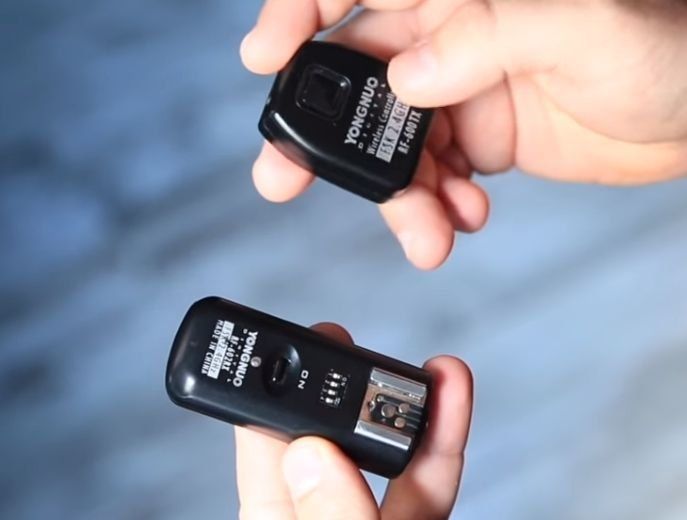
Another synchronizer from the budget segment on our list. This time from Yongnuo.A very simple model, which nevertheless proved its reliability more than once, working in completely different conditions. The functionality is small, but in principle, much is not required from the synchronizer.
The power button is located on both the transmitter and the receiver. There are also several channel position switches on the receiver, if there is interference on some of them.
The transmitter has a test button, with which you can check whether the synchronizer works at all or wake up the flash from sleep mode.
If you need multiple synchronizers to work with multiple external flashes, you can simply buy a few additional receivers.
The range declared by the manufacturer is up to 100 meters. And they really work great at this distance.
In addition, the synchronizer can be used as a camera control panel. The wire from the receiver can be connected to a special connector on the camera and take pictures using the transmitter as a remote control.
The battery in the transmitter is very tenacious. It is enough for about a year of active use. The receiver uses standard AA batteries. They will last for a couple of months of active use, but if you use your equipment daily for several hours, they will have to be changed even more often.
- Solid and reliable design, resistant to different climatic conditions. You can shoot in rain and snow. Places with high humidity, like caves, will not cause problems either;
- Good stated range. The device really works at 100 meters, as stated by the manufacturer;
- Implemented a camera remote control mode that allows you to activate the camera from a distance;
- Low price.
- Flimsy lids for the battery tray. Both on the receiver and on the transmitter, the covers dangle and strive to fly off after the first replacement of the batteries;
- A rare and expensive transmitter battery. For the transmitter, due to its non-standard shape, a special battery is needed, which is quite problematic to find. Yes, and it costs 300 rubles.
Conclusion:
This model will be a good buy if you need a reliable synchronizer that will honestly perform its flash control functions. This simple model is worth every penny spent on it and will serve you faithfully for a long time, and dangling covers can simply be sealed with tape.
YOUNGNUO 622c ($100-110)
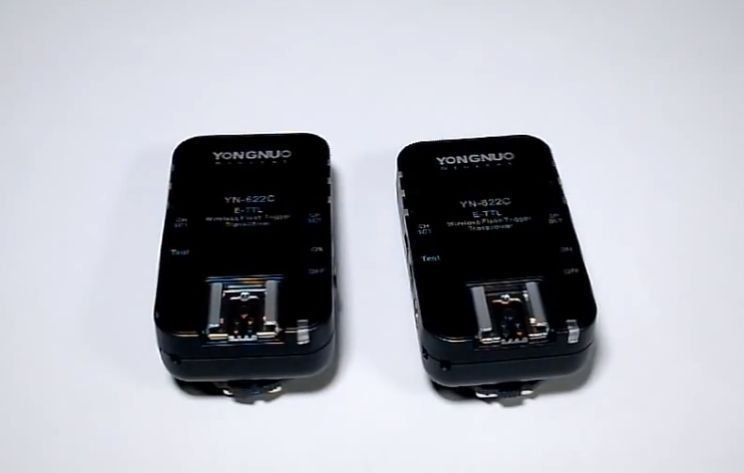
If you're looking for more than just a flash starter, Yongnuo has something for you.
If you have been taking photographs for a long time and are considering calling yourself a professional photographer, then you have probably encountered the problem of the inability to adjust the flash output. Therefore, I often had to run to the stands with a softbox or an umbrella attached to them, since it is often during photo shoots that you often have to change the flash settings. And if there is more than one rack, then these races start to strain a lot, especially if the photo session is long
In the new Yongnuo model, you can adjust the flash settings on all modules by connecting one of them to the camera. This became possible due to the fact that each module is a so-called "transceiver".
It can simultaneously act as a receiver and transmitter, so the same parameters that you set in the module on the camera will be used for flashes.
The functionality of the 622c is simply huge, especially when compared with cheap models.
In addition to the ability described above to set the parameters manually from the camera without approaching the flash, you can turn on flash exposure compensation in automatic mode. Another important advantage of this synchronizer is the high-speed synchronization mode. It allows you to take photos at the shortest shutter speeds up to 1/8000 (!) seconds.
In addition, if you have a lot of flashes in your studio, you can break them into groups and set up each group separately.
It even has an autofocus assist feature. It will come in handy if you shoot in a dark room or at night on the street. To check how the autofocus backlight works, you can give a test pulse with the test button.
Since the transmitter is also a receiver, thanks to the “through shoe” system, a flash can be installed in the transmitter.
The range is short - only 50 meters, but this is enough for working in the studio or shooting on the street.
The case of Yongnuo 622c is made of glossy plastic and scratches quickly.
- Huge functionality. This model has a large set of all sorts of nice features that greatly simplify the life of the photographer;
- AF illuminator;
- More convenient battery format. It uses AA batteries. Exactly the same ones are used for flashes, so you don’t have to buy other batteries for the synchronizer separately;
- Ability to work with flash groups;
- Work with group ratios is well implemented;
- Price.
- Glossy plastic scratches easily. Although the plastic is of high quality, and this does not greatly affect the performance of the device itself, it becomes worn rather soon;
- Small range;
- It is not possible to update the firmware or connect an external power supply.
Conclusion:
This gadget will be a wonderful acquisition for any professional photographer. Through the efforts of Yongnuo, you can get the same features as the expensive Poket Wizard at a much lower price.
PIXEL King Wireless TTL Flash Trigger Set (~$90)
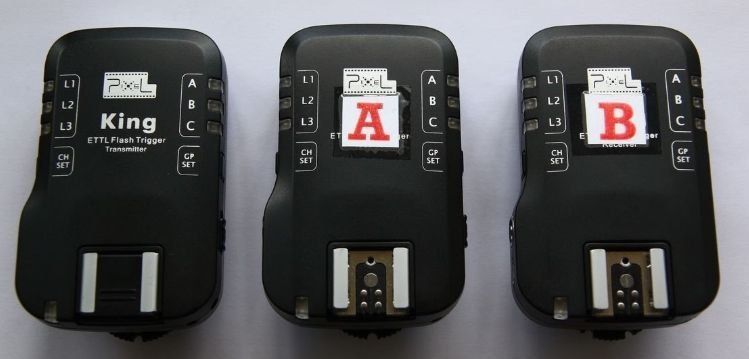
Another model from the middle class, giving the photographer almost the same opportunities as the previous one. We will dwell on them in detail. It's worth starting with the appearance.
PIXEL King with all the rest of its goodness in the form of cables for studio flashes, USB wires, stands, various straps and a manual, is packed in an elegant case with a belt clip.
The gadget itself is made of matte plastic, does not scratch and looks more impressive than the device from Yongnuo. It can be seen that the design has been done better here.
PIXEL King is not a transceiver, its modules are a receiver and a transmitter. That nevertheless does not prevent him from implementing almost all the same functions that were used in Yongnuo 622c.
The only exception is the strobe mode, which is not even set in the transmitter settings.
Autofocus backlight is also present here, but it works a little differently. It looks like a spot from a flashlight. In contrast to Yongnuo 622c, the backlight of which looks like several dashes placed in different planes.
But this is offset by a huge range of 150 meters, despite the declared 100. This opens up vast horizons for shooting. Now you can shoot even with a long-range telephoto lens or place the flash out of line of sight.
For devices from PIXEL King, there is the possibility of flashing. It is carried out via the USB cable that comes with the kit. An external power supply can be connected to the same connector.
- Assembly and design. Synchronizers from PIXEL King look beautiful and impressive, which distinguishes them from competitors;
- Range of action. A range of 150 meters allows you to conduct any type of shooting, which at least somehow depends on the distance;
- Possibility of flashing or connecting an external power source;
- Good equipment;
- Affordable price.
- The strobe mode is not configured;
- There is no way to adjust group ratios.
Conclusion:
PIXEL King is worth giving preference if shooting range is important to you. Otherwise, it is very similar to the Yongnuo 622c, so if the strobe settings are not important to you, then there is not much difference between these models. Well, another plus in favor of PIXEL King is the presence of a USB connector.
PocketWizard
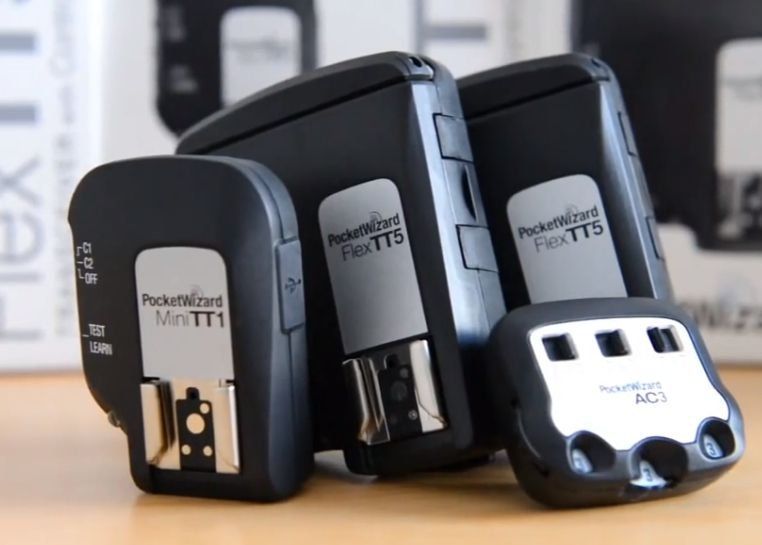
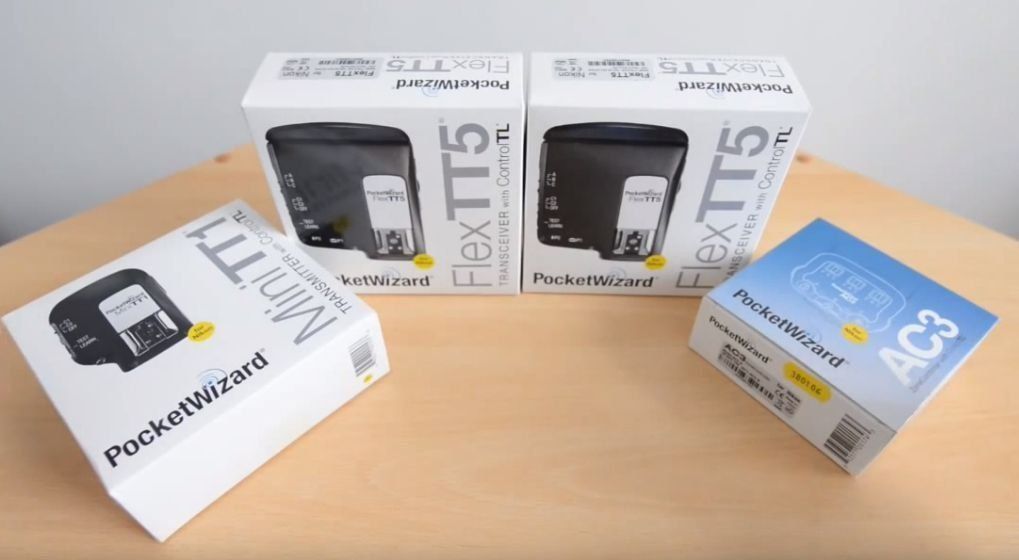
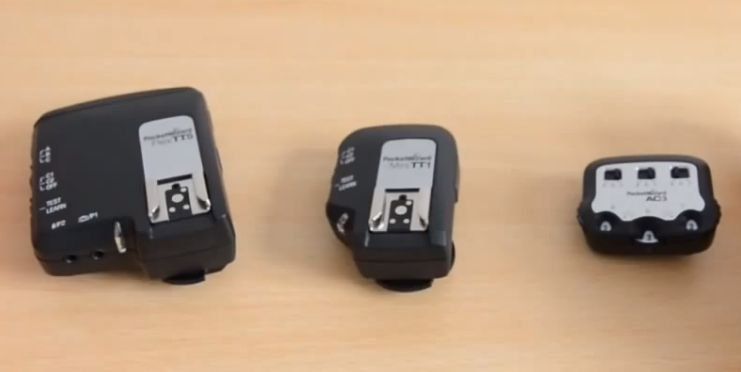
And finally, we will consider the most professional of professional synchronizers - PocketWizard.
Let's start with the fact that, unlike the other devices discussed above, PocketWizard is a real system consisting of several modules, each of which performs its own function.
Modules
For example, we will consider 3 types of modules:
- PocketWizard FlexTT5 - transceivers can be both transmitters and receivers, respectively, can be installed on the camera or connected to the flash. In our example, they will act as receivers and stand on flashes;
- MiniTT1 is a transmitter. You can use the FlexTT5 as a transmitter, but the MiniTT1 is more comfortable, weighs less and is more compact, although it only serves as a flash trigger;
- AC3 - control system. We will talk about it below.
Specifications
The characteristics of PoketWizard are truly impressive:
- Claimed range - 240 meters;
- As many as 35 channels are allocated for signal transmission;
- The ability to synchronize flashes even at shutter speeds of 1/8000 seconds;
- PoketWizard is automatically synchronized on the second (rear) curtain of the shutter mechanism, the settings are determined through the camera interface;
- PW modules can work with PLUS II and MultiMAX, but without TTL support.
Having familiarized yourself with the parameters, it will not be superfluous to read the instructions. Indeed, in PocketWizard, the correct sequence of turning on / off the synchronizer modules, cameras and flashes is very important, because if the sequence is mixed up, they simply will not turn on.
Also, before connecting the equipment, it is recommended to update the firmware to the latest version. This will not take much time and in the future will help to avoid errors in the operation of the synchronizer software.
Not worth talking about the quality of plastic and assembly. Everything is assembled just fine, the modules lie pleasantly in the hands and it is a pleasure to work with them.
But how good they are, you can see only by testing them in practice. Everything works cleanly and without glitches, which is to be expected from PoketWizard.
Problems can only arise due to incorrectly selected adapters. Therefore, you should not use conductors with special connectors designed for sync cords, as this may cause the system to work incorrectly.
The best option for mounting such equipment on a rack is an adapter from Lastolite or Poiskfoto.
Special attention should be paid to AC3 ZoneController. This control station is worn on top of the transceiver or transmitter and allows you to individually control each of the 3 configured groups of flashes.
Switches located closer to the user allow flashes to be switched to one of 3 available modes of operation, which are indicated by intuitive icons.
- Automatic or TTL (A);
- Manual (M);
- Shutdown (crossed out zero).
On the front, with the help of special switches made in the form of small wheels, the power for each group of flashes is set.
With this device, you can set up the entire lighting scheme for a photo shoot in a few minutes without touching the flashes once again.
This will be especially appreciated by those who have to put flashes on high racks and climb them several times very annoying.
- Unrivaled build quality and materials. All parts are just perfectly matched to each other, each module feels like a single monolithic product;
- Huge range. None of the synchronization devices we have reviewed work at such a range;
- Convenient modular system. In particular, the AC3 ZoneController, which simplifies flash control as much as possible;
- TTL mode. Although it is now available in much cheaper models, here it is implemented as well as anywhere else. You can rely on automation 100%. If you are a beginner photographer and do not know how to properly set the flash, rely on TTL.
- Inability to mount something on top of the AC3 remote/ Usually this is not required, but for reportage photography it would be nice to use on-camera shooting as well;
- Price. Alas, for such a miracle you have to pay a rather big amount. The entire modular system can cost over $400;
Conclusion:
To date, Poket Wizzard remains the best professional synchronizer.If you are planning to seriously engage in photography, it will be a great helper for you. Its price is fully justified. For this, albeit rather big money, you will get quality that you will not find anywhere else.
new entries
Categories
Useful
Popular Articles
-

Top ranking of the best and cheapest scooters up to 50cc in 2022
Views: 131651 -

Rating of the best soundproofing materials for an apartment in 2022
Views: 127691 -

Rating of cheap analogues of expensive medicines for flu and colds for 2022
Views: 124519 -

The best men's sneakers in 2022
Views: 124033 -

The Best Complex Vitamins in 2022
Views: 121940 -

Top ranking of the best smartwatches 2022 - price-quality ratio
Views: 114980 -

The best paint for gray hair - top rating 2022
Views: 113395 -

Ranking of the best wood paints for interior work in 2022
Views: 110319 -

Rating of the best spinning reels in 2022
Views: 105329 -

Ranking of the best sex dolls for men for 2022
Views: 104366 -

Ranking of the best action cameras from China in 2022
Views: 102216 -

The most effective calcium preparations for adults and children in 2022
Views: 102011
